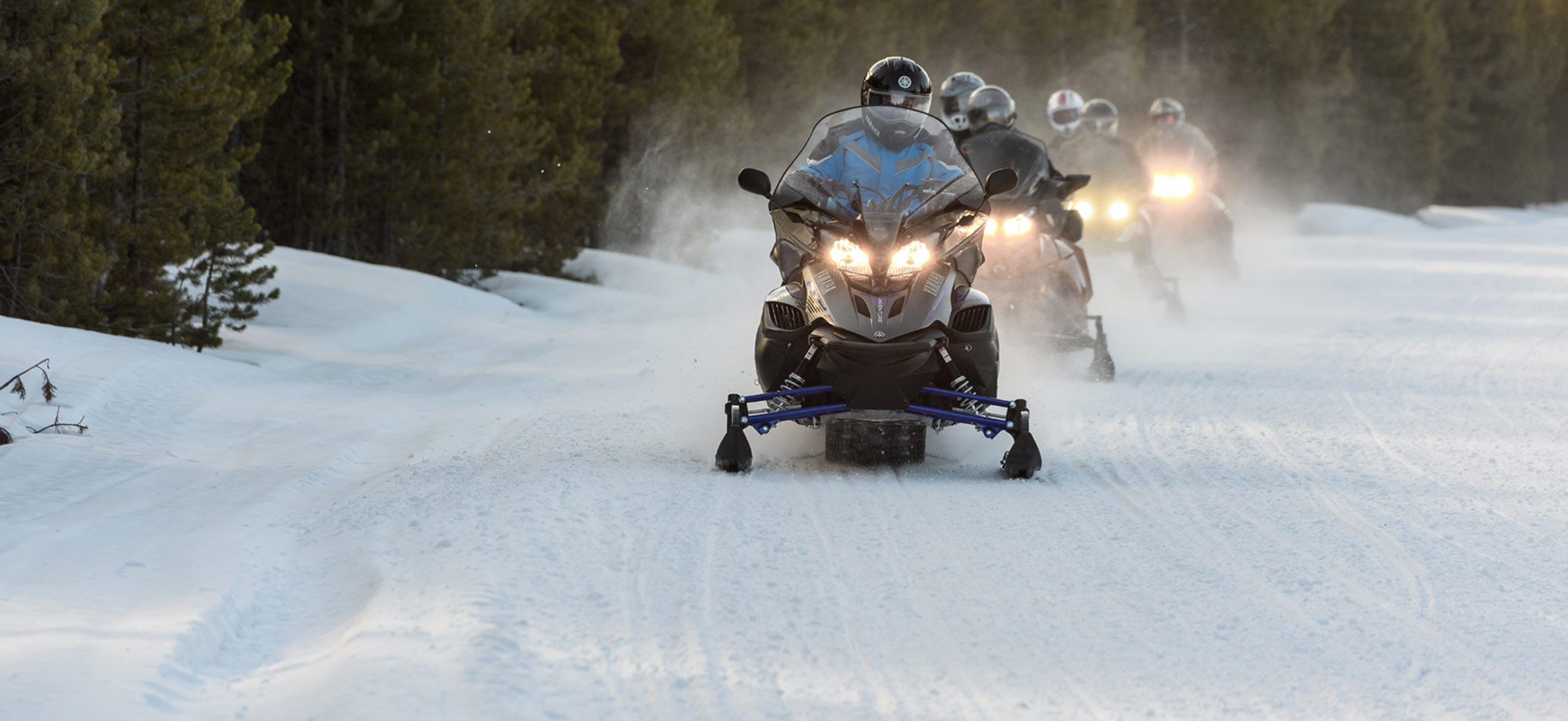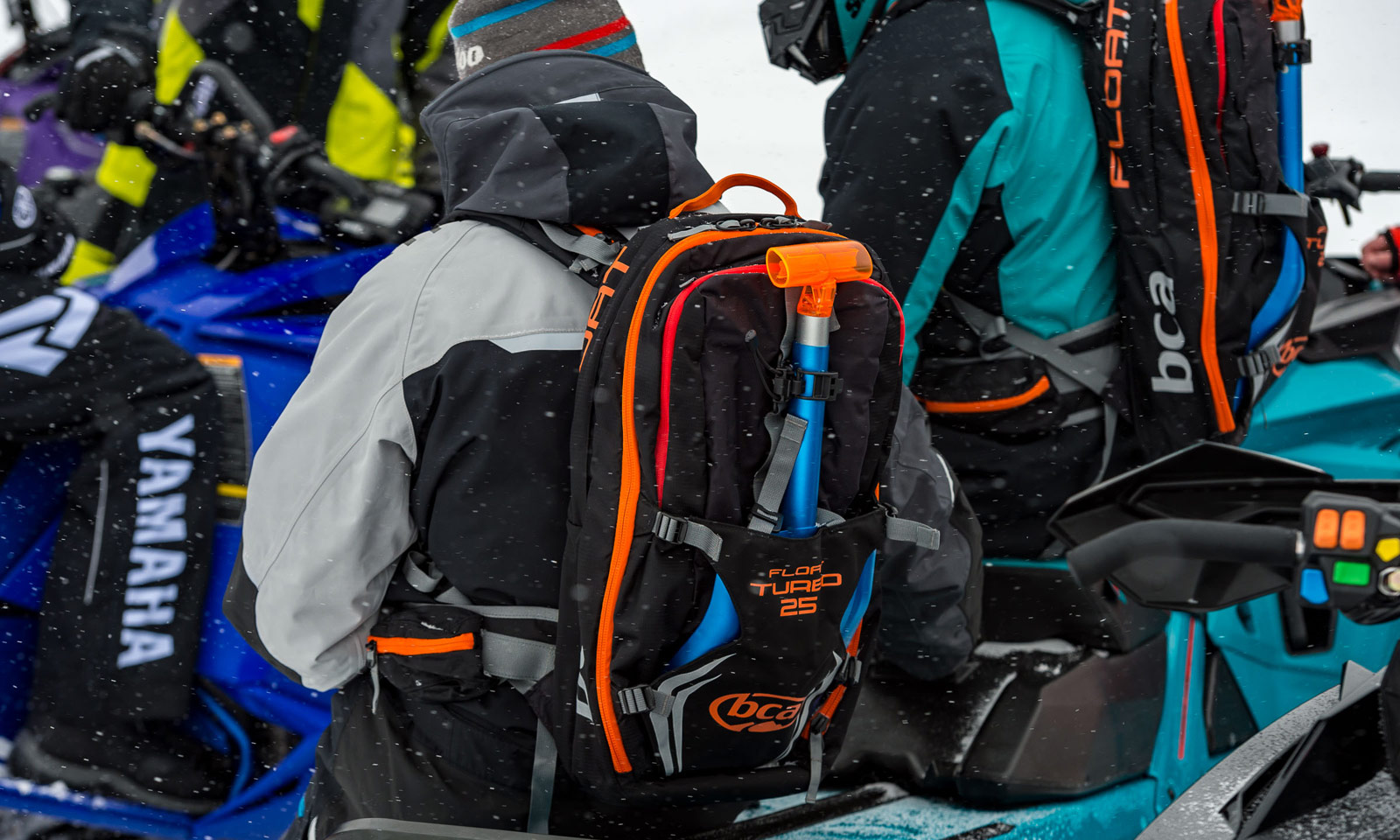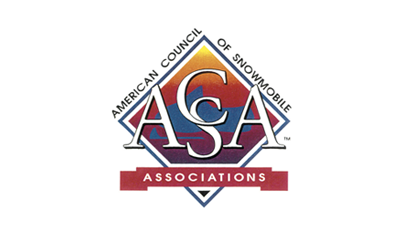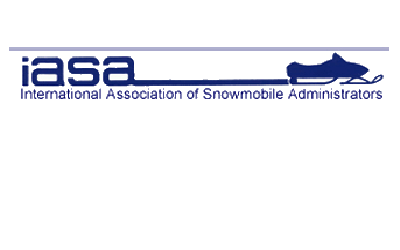Gear to Pack
You should carry a variety of gear along with you on your snowmobile outing to ensure you're properly prepared for changing conditions as well as unanticipated challenges you may encounter during your trip.
Click the curriculum tab to begin this course section.
Gear to Pack
Personal Items
Create a kit of personal items that includes your driver's license, snowmobile safety certification card (if required by your jurisdiction), money, critical medications, insurance forms for vehicle, cell or satellite phone, water, high energy food, and any other items you deem important. This kit should be with you at all times.
Be sure to charge the batteries of your cell or satellite phone before you begin your trip and keep it warm, stored in an inside coat pocket, and either turned off or to airplane mode to help preserve the battery life. Cell phones and even satellite phones often do not work in remote areas where you may be snowmobiling, so don't rely on a phone as your only safety device. Always call 911 directly to request help or to report an emergency (versus calling anyone else first) since the 911 dispatch center can determine your exact location.
Safety Equipment
Always carry safety equipment on your snowmobile in case of an emergency. At a minimum this should include a compass and map, waterproof matches with a candle or fire starter, a flashlight with spare batteries, and an extra ignition key.
A GPS (global positioning system) or SPOT messenger unit can be helpful in emergency situations since it provides your exact location to emergency personnel. These units run on batteries, so be sure to check them before you ride, bring some spares with you, and keep them warm. It is helpful to review how the unit works before you ride so you are familiar enough to use it while dealing with the stress of an emergency.
A small shovel can be extremely helpful if you become stuck or stranded. Many shovels are small enough to store on your sled or to easily carry in a backpack. Always carry a shovel, along with a probe and avalanche beacon, when riding in avalanche prone areas.
A strobe light or flares may also be helpful in an emergency situation. Since strobes run on batteries, always bring extra and keep them warm so you can keep the strobe operational until emergency personnel arrive. If using flares, be sure to follow instructions to avoid injury.
Ice picks fastened to a cord should be carried by snowmobilers if traveling on frozen lakes and rivers. The cord from each pick should be threaded through the sleeves of your jacket, out of the way of your hands until they are needed. If you happen to fall through the ice, the picks will be right at your wrists covered by your jacket sleeves. By jamming the pointed end of the pick down in the ice, the pick will anchor you and allow you to pull your body back onto the ice.
Pack a tool kit for snowmobile maintenance.
Tools
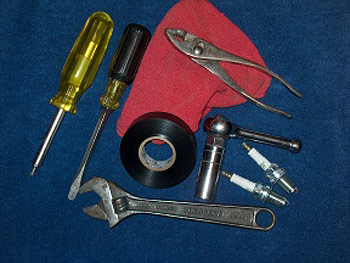
Snowmobile manufacturers generally include a basic tool kit inside each snowmobile's hood or under its seat that includes a spark plug wrench, other wrenches for common adjustments, flathead and Phillips drive screwdrivers, and a strap for emergency starting 2-stroke snowmobiles with a recoil start. These tools should always remain with the snowmobile.
Always ensure there are spare spark plugs and a spare drive belt with the snowmobile at all times in the event of failure. Also consider adding a knife, pliers/side cutters, adjustable wrench, electrical or duct tape, rags, bungee cords, and a tow rope to the basic tool kit to help perform general on-trail repairs and maintenance.
Emergency First Aid Kit
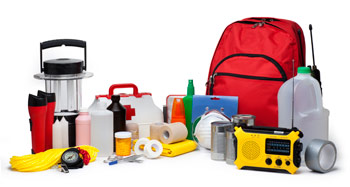
A first aid kit should always be carried with you on your trip. This kit should include a variety of items necessary to assist in an emergency. There are a number of good first aid kits available commercially that are compact enough to easily be carried on a snowmobile or in a backpack. Otherwise you can build your own custom kit that should include, but not be limited to bandages, 2-inch compresses, 4-inch compresses, a roll of 2-inch gauze, a roll of 1-inch adhesive tape, a thermal/space blanket, knife or scissors, alcohol wipes, and antibiotic ointment. All items should be stored in a waterproof container; do not include liquids that could freeze.
It is highly recommended that you take a certified first aid and CPR (Cardiopulmonary Resuscitation) course to aid you in case of an emergency. Always be aware of the dangers of frostbite while snowmobiling; take precautions to prevent it by always keeping skin covered.
